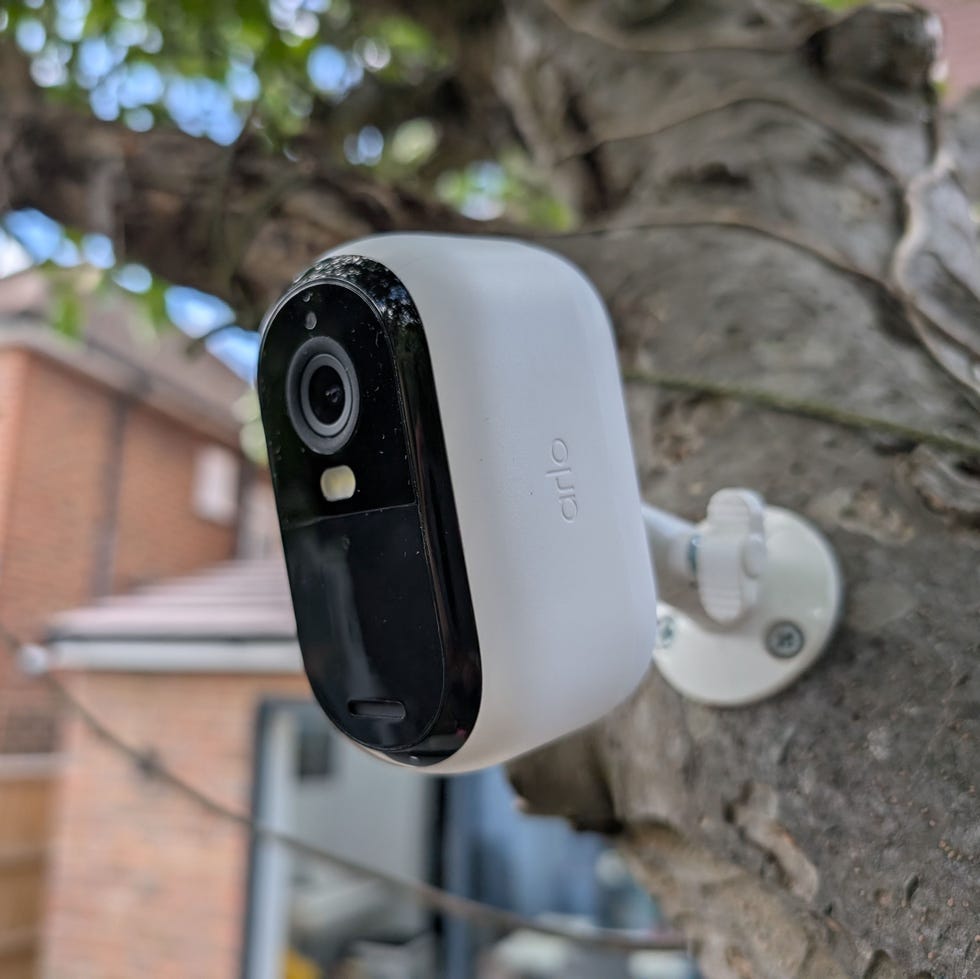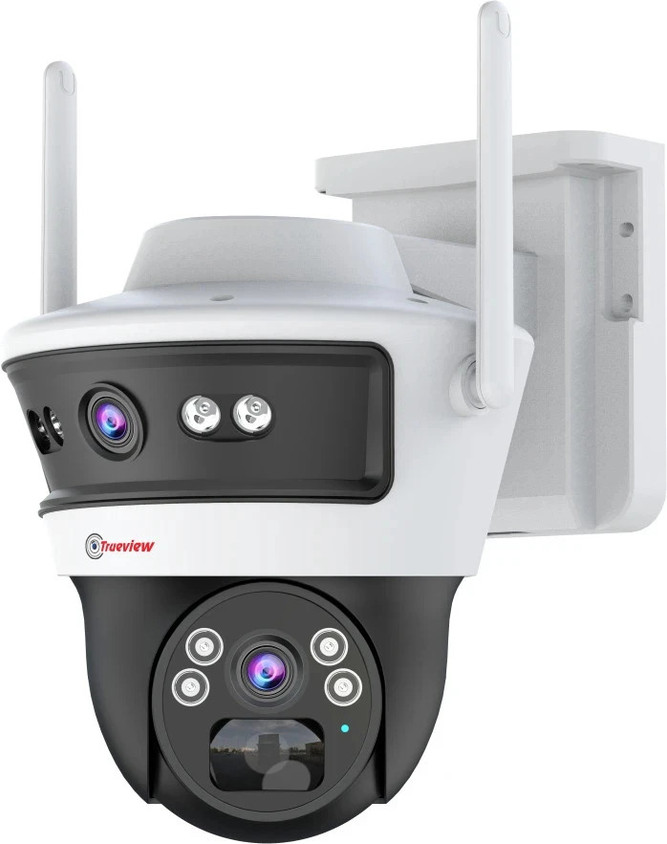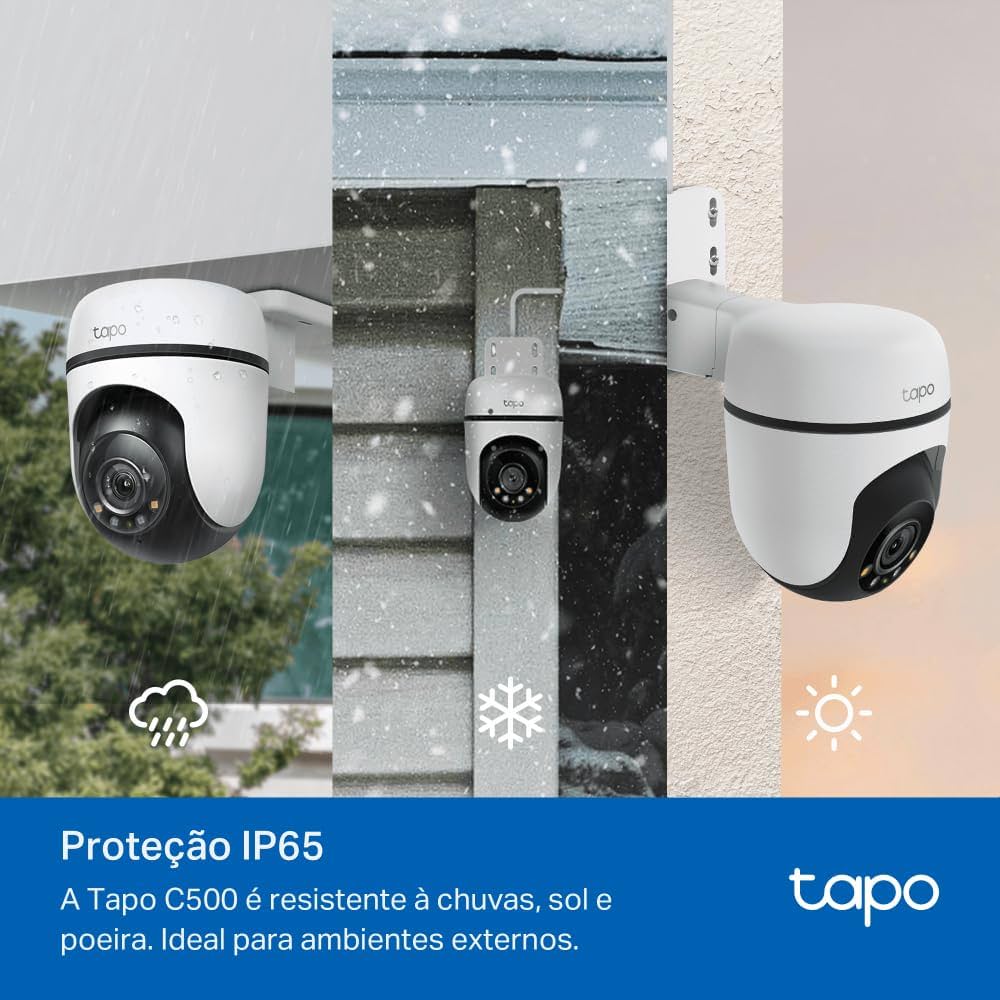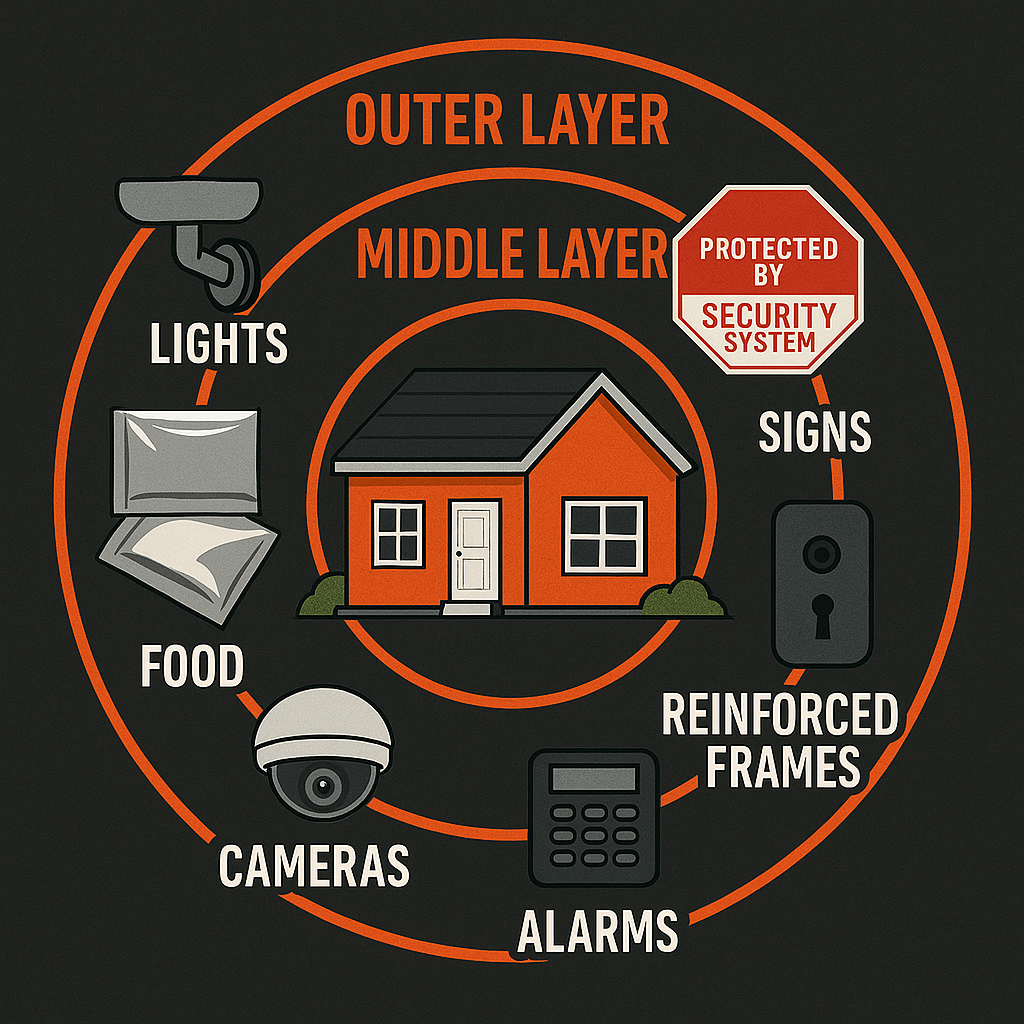Have you ever wondered how safe your home really is when you’re not around? Outdoor security cameras give you the power to watch over your property anytime, anywhere.
Imagine having eyes on your yard, driveway, or front door, even when you’re miles away. This simple tool can protect your loved ones, keep your valuables safe, and give you peace of mind like never before. Ready to discover how outdoor security cameras can change the way you protect your home?
Keep reading, because what you learn here could make all the difference.

Credit: www.goodhousekeeping.com
Benefits Of Outdoor Security Cameras
Outdoor security cameras help protect your home and property. They keep an eye on areas outside your house.
These cameras give you peace of mind by watching for unwanted activity. They help you stay safe day and night.
Crime Deterrence
Visible cameras scare off thieves and vandals. People are less likely to commit crimes if they see cameras.
Security cameras make your home look protected. This lowers the chances of break-ins and damage.
- Discourages burglars
- Prevents vandalism
- Reduces trespassing
Remote Monitoring
You can watch your property from anywhere using a phone or computer. Cameras send live video to your device.
This lets you check your home even when you are far away. You can act fast if you see something wrong.
- Watch your home anytime
- Receive alerts on your phone
- Control cameras remotely
Evidence Collection
Cameras record video that can help police catch criminals. Videos provide proof in case of theft or damage.
This evidence can be used in court or insurance claims. It helps solve crimes faster and protects your rights.

Credit: www.amazon.in
Types Of Outdoor Security Cameras
Outdoor security cameras help keep your property safe. There are different types to choose from.
Each type has unique features and fits different needs. Knowing the types helps you pick the right one.
Wired Vs Wireless
Wired cameras connect with cables to power and recording devices. They offer steady power and reliable video.
Wireless cameras use Wi-Fi or other signals to send video. They are easier to install and move around.
- Wired:Stable connection, needs cables, less interference
- Wireless:Flexible placement, easy setup, needs batteries or power source
Bullet Cameras
Bullet cameras are long and cylindrical. They look like a small tube or bullet shape.
They are easy to aim and good for watching specific areas like doors or windows. They often have good zoom.
- Clear images at long distances
- Visible design can deter intruders
- Often weatherproof for outdoor use
Dome Cameras
Dome cameras have a round shape and a tinted cover. They blend well with ceilings or walls.
They are hard to see where the camera points. This makes them good for wide-area surveillance.
- Less obvious direction
- Good for 360-degree views
- Usually vandal-resistant
Ptz Cameras
PTZ means Pan, Tilt, and Zoom. These cameras can move side to side, up and down, and zoom in.
They cover large areas and can follow moving objects. PTZ cameras are often used in big outdoor spaces.
- Remote control movement
- Zoom to see details
- Good for active monitoring
Key Features To Consider
Outdoor security cameras help keep your home safe. Choosing the right features can improve your security.
This guide covers important features to look for in outdoor security cameras.
Resolution And Video Quality
Higher resolution means clearer images and videos. Look for cameras with at least 1080p resolution.
Good video quality helps identify people and details during an event.
- 1080p or higher resolution is recommended
- Wide-angle lenses cover more area
- High frame rates make videos smooth
Night Vision Capabilities
Night vision lets cameras capture clear images in the dark. Infrared LEDs are common for this feature.
Choose cameras with strong night vision for 24/7 monitoring.
- Infrared LEDs provide black and white images at night
- Color night vision shows more detail in low light
- Check the night vision range for your property size
Motion Detection
Motion detection alerts you when movement occurs. This saves storage and power by recording only when needed.
Look for cameras with adjustable motion zones to reduce false alarms.
- Adjust sensitivity to avoid false alerts
- Set specific areas for motion detection
- Receive instant notifications on your phone
Weather Resistance
Outdoor cameras face rain, snow, and heat. Weather resistance protects them from damage.
Check for IP ratings that show how well the camera resists dust and water.
- IP65 or higher rating is ideal for outdoor use
- Durable materials resist harsh weather
- Proper housing prevents damage from moisture
Two-way Audio
Two-way audio allows you to listen and speak through the camera. This helps communicate with visitors or warn intruders.
Choose cameras with clear sound quality and noise cancellation.
- Built-in microphone and speaker
- Clear audio for easy communication
- Use your phone to talk through the camera
Installation Tips
Installing outdoor security cameras needs careful planning. Good setup improves camera performance and safety.
This guide shares tips on placing cameras, powering them, and setting up the network.
Best Camera Placement
Put cameras where they cover main entrances and open areas. Avoid pointing cameras at direct sunlight or bright lights.
Mount cameras high enough to stop tampering but low enough for clear images.
- Cover front door, back door, and garage
- Place cameras near driveways and walkways
- Avoid areas with heavy tree branches blocking view
- Use wide-angle lenses for large areas
Power Sources
Choose power options that suit your camera type and location. Reliable power ensures cameras stay on all the time.
Battery-powered cameras are easy to install but need recharging. Wired cameras require power outlets or solar panels.
- Use outdoor-rated power cables for wired cameras
- Check battery life regularly for battery cameras
- Consider solar panels for remote spots
- Protect cables from weather and animals
Network Setup
Connect cameras to a strong and stable network for smooth video streaming. Use Wi-Fi or wired connections based on your setup.
Secure your network to prevent unauthorized access. Change default passwords and use encryption.
- Place routers near cameras for strong signals
- Use Ethernet cables for stable wired connections
- Update camera firmware regularly
- Set up a separate network for security devices
Integrating With Smart Home Systems
Outdoor security cameras can work with smart home systems. This makes it easier to control and monitor your home.
Connecting cameras to other devices helps you keep your home safe. You can get alerts and control cameras from one place.
Compatibility With Assistants
Many outdoor cameras work with voice assistants. You can use devices like Alexa, Google Assistant, or Siri.
These assistants let you check camera views or control settings with simple voice commands.
- Ask your assistant to show the camera feed
- Turn cameras on or off using voice
- Receive voice alerts from your camera system
Automation Options
You can set up smart rules for your outdoor cameras. This helps cameras work automatically with other smart devices.
For example, cameras can start recording when a smart door opens or lights turn on at night.
- Record video when motion is detected
- Turn on lights if the camera spots movement
- Send alerts if a door opens unexpectedly
App Controls
Smartphone apps let you control outdoor cameras from anywhere. You can watch live video and change settings easily.
Apps also send notifications if the camera detects unusual activity. You can save clips or share them quickly.
- View live or recorded video anytime
- Change camera angle or zoom remotely
- Set alerts for motion or sound detection
Privacy And Legal Considerations
Outdoor security cameras help protect homes and businesses. They watch for unusual activity and keep people safe.
It is important to use these cameras in a way that respects privacy and follows the law. This guide covers key points about privacy and legal rules.
Local Laws On Surveillance
Different places have different laws about using security cameras. You must know the rules in your area before installing one.
These laws tell you where cameras can point, what you can record, and how to handle recorded videos. Not following these rules can lead to fines or legal trouble.
- Do not record inside private spaces like bathrooms or bedrooms.
- Do not capture audio without permission, as it may be illegal.
- Inform visitors if cameras are in use, if required by law.
- Check if you need a permit to install cameras outdoors.
Respecting Neighbor Privacy
Outdoor cameras can sometimes see parts of your neighbor’s property. This may cause privacy concerns or disputes.
To respect your neighbors, aim cameras only at your property. Avoid filming their windows, yards, or driveways.
- Adjust camera angles to cover your own space only.
- Talk with neighbors before installing cameras near property lines.
- Use privacy masks or zones if your camera supports them.
- Check local rules about filming shared spaces or public areas.
Maintenance And Troubleshooting
Outdoor security cameras help keep your property safe. To work well, they need regular care and fixes.
This guide covers cleaning, updating firmware, and solving common problems with your cameras.
Regular Cleaning
Dirt and dust can block your camera’s view. Clean the lens often to keep images clear.
Use a soft cloth and mild cleaner. Avoid harsh chemicals that can damage the lens.
- Turn off the camera before cleaning
- Gently wipe the lens with a microfiber cloth
- Check for spider webs or debris around the camera
- Clean the camera body to prevent dirt buildup
Firmware Updates
Firmware is the software inside your camera. Updates fix bugs and add features.
Check for updates regularly. Follow the camera maker’s instructions to install them safely.
- Connect the camera to Wi-Fi
- Open the camera app or website
- Look for firmware or system update option
- Download and install the update
- Do not turn off the camera during update
Common Issues And Fixes
Sometimes cameras stop working or show poor video. Many problems have easy fixes.
- No video:Check power and Wi-Fi connections.
- Blurry image:Clean the lens carefully.
- Camera offline:Restart the camera and router.
- Motion alerts not working:Check motion detection settings.
- App not connecting:Update the app and camera firmware.

Credit: www.flipkart.com
Frequently Asked Questions
What Are The Benefits Of Outdoor Security Cameras?
Outdoor security cameras deter crime and monitor property 24/7. They provide real-time alerts and recorded footage for evidence. Cameras increase home safety and peace of mind. They also allow remote viewing via smartphone apps, enhancing convenience and control.
How Do Outdoor Security Cameras Work?
Outdoor cameras use lenses to capture video, which is stored locally or in the cloud. Motion sensors trigger recording and alerts. Many cameras offer night vision for low-light conditions. They connect via Wi-Fi or wired networks for continuous monitoring.
Are Wireless Outdoor Security Cameras Reliable?
Yes, wireless cameras offer flexible installation and reliable performance. They use Wi-Fi or battery power, reducing wiring hassles. Modern models provide strong signals and encrypted data for security. Battery life varies, so regular maintenance is needed for optimal use.
What Features Should I Look For In Outdoor Cameras?
Look for weather resistance, high resolution, night vision, and motion detection. Two-way audio and cloud storage enhance functionality. Easy installation and smartphone compatibility improve user experience. These features ensure effective and convenient home surveillance.
Conclusion
Outdoor security cameras offer peace and safety for your home. They deter potential intruders effectively. With clear images, you see every detail. Installation is simple, and many options fit your budget. Night vision and motion detection add extra security layers.
These cameras protect your family and property day and night. Choose wisely for your unique needs. Research features to make informed decisions. Security doesn’t have to be complex. A little investment now saves stress later. Feel secure knowing your home is monitored.
Peace of mind is priceless. Stay safe, stay informed.
19 min read







